Vital Assets is the newest, hottest, supposed-to-have-been-released-already thing to not hit the shelves for Legion. This particular delay almost certainly is out of FFG’s hands, given what is transpiring these days. Anyway, Vital Assets will be coming to rock a Legion game near you soon enough, but in the meantime here are some tips in case you want to proxy some of the new missions.
Before we get into this, one not-so-hot competitive take: you should buy Vital Assets. It changes the game and your turn 0 more than anything since Priority Supplies, and if you want to be competing in tournaments you are going to need it. If you don’t want to be competing in tournaments, you still probably want it, because the new cards are all really fun and interesting.
Moving on…
What is Vital Assets
Vital Assets is a new neutral expansion that includes 9 new battle cards (objective, condition, deployment) and a bunch of sexy plastic to go along with them. All of the new battle cards will be tournament legal after its release, which means you will now have 8 battles cards to choose from in each category when building your deck (four from the core set, one from Priority Supplies, three from Vital Assets), for a total of 24 battle cards. This means Blue Player now gets to “cut” 12 cards instead of three before the game even starts, by excluding them from their deck. This has several implications competitively:
- Bids are more important
- Lists can be “tailored” to play to specific sets of battle cards
- Lists with clear weaknesses are more vulnerable to heavily tailored decks (and thus must bid more)
- Building a list without clear weaknesses is more difficult
All of this combines to create an environment where bidding becomes more important. I expect “serious” bids to fall in the 10-15 range; and if you aren’t bidding that, you might as well try and fit that extra upgrade in and go “no bid.” A “no bid” list should be designed to handle a variety of different objectives, conditions, and deployments, rather than hoping you don’t run across that one card you really don’t want to deal with.
If you want some more general tips on how to manage “Turn 0”, check out Mike’s article on the subject: Positive Turn Zero and Objective Plays
Without further ado, let’s dive into the card’s themselves. With each, we will hit 1) strong and weak list archetypes 2) and specific ability/unit synergies.
List Archetypes
For the purposes of this article, the list archetypes are below. Note that some lists can be hybrids of these archetypes.
Pure gunline: A list with a lot of guns and a strong support character (Krennic, Veers, Leia, etc.). Can also include a bounty hunter, especially Bossk.
Clone gunline: I’m separating this from “Pure gunline” because a lot of things make the clone version good at things that pure gunlines aren’t: notably Rex and Secret Mission (R2-D2 and Padme).
Force Flex: A list with a force using focus piece and a roster of supporting trooper units.
Heavy: A list with one or two heavy vehicles. The most successful versions of this currently have a Saber, and AAT (yes, I know it’s not out yet) or an AT-ST. Rebel heavies fall more cleanly in the “Mobile threat” archetype below.
Mobile threat: A list with multiple fast units. The most competitive example of this are tauntaun lists, but also includes speeder bikes and T-47s.
Infiltrate: A list with a strong infiltration threat: Iden, Cassian, or Vader (sorry Jyn). This can overlap with the others above.
Objectives
Hostage Exchange
Strong List Archetypes: Force Flex, Clone Gunline
Weak List Archetypes: Heavy
Specific unit/ability syngeries: Things that allow you to move opposing units (Force Push, Vader’s Might, Serve Your Master), anything that gives you free moves (Smoke Screen, No Time for Sorrows, Scouting Party, Pull the Strings), Victory Point Abilities (Secret Mission and Bounty)
This one is a little weird, but once you play it a few times it starts to make sense. Hostage Exchange essentially plays out like a brawl for the center, where each side has a “football” that they are trying to get back to their side. Things that are good at brawling: Force users. Also helpful: abilities that allow you to move opposing units (ahem, Force Push). Are you sensing a trend? The best way to think of Hostage is like a game of Recover the Supplies, where there are only two boxes, but both boxes are in the middle and each side starts with one of them. Basically, unless you have Rex or a Force User, you probably want to cut this.
You have to be very conscious of the possibility for this to tie on VPs; as soon as it looks like both players are going to get their hostage back safely and neither of you have Secret Mission or Bounty, you have to immediately start playing for kill points.
Secret Mission and Bounty can be strong on Hostage, as you are somewhat likely to end on a victory point tie.
Bombing Run
Strong List Archetypes: Mobile Threat
Weak List Archetypes: Pure Gunline
Specific Unit/Ability Synergies: Tauntauns, Speeder Bikes, T-47, Secret Mission
Before we go anywhere else, let’s clear up how this card works. You start by placing three claimed objective tokens in base contact with three friendly unit leaders. There are no restrictions on what type of units you can place a claimed objective token in base contact with. This means that while vehicles and creature troopers cannot pick up an unclaimed bomb, they can start the game with a claimed one and later drop it.
The best units for this are naturally units that are fast, especially tauntauns and speeder bikes. It is also fairly likely that you will have spread out deployment zones in your deck with a “Mobile Threat” list, like Danger Close, Disarray, and Battle Lines, which makes Bombing Run even easier to score.
Don’t lean too heavily on the explosion damage portion of the bomb. You want to score victory points, first and foremost. If you can safely drop a bomb near some deserted corner of your opponent’s zone and bank your VP, just do that.
Also don’t forget that you don’t detonate until after the turn is over, and opposing trooper units can pick up unclaimed bombs. Activation count is therefore very important. Don’t drop bombs near unactivated trooper units.
Bottom line: If you aren’t running Tauntauns or Speeder Bikes, you probably want to cut this one.
Payload
Strong List Archetypes: Force Flex, Mobile Threat
Weak List Archetypes: None
Unit/Ability Synergies: Secret Mission, brawling units
This one is straight out of Team Fortress or Overwatch. Both players are pushing a cart towards a specific point on the map, and the closer you get it to that point, the more points you score. It is worth walking through how this works to understand some of the strategy.
- Blue Player places their cart
- Red Player places their cart
- Blue Player picks a terrain piece for Red Player to go to
- Red Player picks a terrain piece for Blue Player to go to
The most important thing here is your opponent chooses your destination location after you put your cart on the table. This essentially means your cart needs to be centrally located, or your opponent is going to pick a terrain piece on the ass end of the map from where you drop your cart.
Payload basically goes one of two ways, depending on where each cart and each destination end up:
- The carts and destinations are directly opposite one another, and it turns into a slugfest where each player has to go through the other player’s cart path to reach their destination.
- The carts and destinations do not intersect or come near each other, and both players must decide how to balance defending their “end zone” and pushing their cart.
In the first case, units that are good at brawling in tight areas will be most helpful. In the second, you want mobile and/or long ranged units. Think about what your list is best and at try and force either situation #1 or situation #2 with your cart placement and terrain destination selection.
Deployments
Danger Close
Strong List Archetypes: Mobile Threat, Infiltrate
Weak List Archetypes: Gunline, Clone Gunline
Specific Unit Synergies: Secret Mission
Danger Close is sort of a cross between Disarray and Advanced Positions, without the Scout move. You have two distinct areas of your zone (the top and bottom “Branches”) that are separated by the middle of the table, as well as an awkward short edge. If you don’t have a list with two commanders or a lot of mobile units, you are probably going to be forced to pick one of those two “branches” to dump your dudes in.
This deployment is great for fast units on Bombing Run and units with Secret Mission, because it is very hard to defend both branches and the ends of the zones are so close to each other. Be careful you don’t under commit to one side and just deploy isolated units to get mulched by something more mobile. If you aren’t running a Mobile Threat list or have Secret Mission, you probably want to cut this one.
Hemmed In
Strong List Archetypes: Clone Gunline, Mobile Threat, Infiltrate
Weak List Archetypes (as Blue): None
This is the first truly asymmetric deployment. At first glance, you might be like, “why would I want to flank myself as blue?” That is a valid question, though when you lay this on the table I think you will realize pretty quickly that isn’t really happening. For starters, if your opponent wants to flank you, they will have to split up while you are centralized, which means you can hammer their weak side with your entire force. Secondly, Blue starts significantly closer to the center. The Blue Deployment zone is a mere 6″ from the center, while the red zone is about 13″ from the center, more than twice as far. As Blue, you can reach the middle box with just a single Scout 2 move before the game starts, or have your Hostage just 2″ from your deployment zone after the first turn.
You also have a lot of control on Payload, where you can centrally locate your bomb cart while your opponent is forced to pick a side and then likely cross through your deployment zone (and your entire army) to get their cart home.
Further, as Blue, you have good defense against Secret Mission compared to most other deployments, with an easy scoring opportunity for your own Secret Mission units.
This deployment is an “always include as Blue”, in my opinion, because of these advantages.
Roll Out
Strong List Archetypes: Heavy, Gunline, Clone Gunline
Weak List Archetypes: None
This is basically Long March, with a slight bonus for vehicles. It’s not clear that you always want to be hanging your vehicles out in front of the rest of your army most of the time anyway.
If your list likes Long March, you want this one too. Gunlines like this for the same reasons as long march: your flanks are guarded by the long table edges, and you can create a narrow field.
Conditions
War Weary
Strong List Archetypes: Clone Gunline (if you have a lot of Phase IIs), Mobile Threat
Weak List Archetypes: Pure Gunline, Force Flex, Heavy, Infiltrate
Yikes. Range 1 is really short. If you have a non-zero quantity of important Courage 1 units (most lists) and only one commander (most lists) you are really not going to like this condition.
There are a couple of lists that can really take advantage of this. The first is Clone lists with a lot of Phase IIs. Your basic Corps unit is Courage 2, and it shouldn’t be hard to keep your handful of Phase Is out of sight and/or in range of your commander.
The second is the standard triple tauntaun, minimum naked Rebel trooper list. In that style you usually only have three Courage 1 units, and they are generally in the backfield pissing on Vaporators or something, not getting shot. Be wary of a poorly timed Give In to Your Anger or Annihilation Looms where they can receive a suppression dump from across the table, but you can usually work around that.
Fortified Positions
Strong List Archetypes: Pure Gunline, Clone Gunline, Heavy
Weak List Archetypes: Mobile Threat
Barricada! Eight barricades is a lot of extra cover to hide behind. This is generally good for gunlines, and bad for things that want to assault gunlines. There isn’t much more to be said about having more barricades on the table.
It is somewhat notable that this slightly devalues snipers, who want shots into open or light cover (down to none) if they can get them.
Supply Drop
Strong List Archetypes: Force Flex, Clone Gunline (with Rex), Infiltrate
Weak List Archetypes: None
Unit Synergies: Scout, Scouting Party, Infiltrate
Whoa Nelly, this is a fun one. It is a bit of a slot machine, but most of the cards are quite solid (more on those in a minute) and you get several bites at the apple, so you can reasonably depend on getting something useful.
An important nuance of this card: you can use the resupply action twice on each condition token. They start the game face down; the first time you use resupply on one, it flips face up. The second time you use resupply on that same token, it gets removed. Each time you also draw two cards and pick one, which means you get to look at four cards for each supply token you access.
There are eight cards with two copies each, which makes it possible to draw duplicates.
Generally speaking, you want to get to these tokens as quickly as possible, since you are drawing from the same deck as your opponent. The early you can try and get pulls for the superior supply cards, the better. You can also steal your opponent’s supply tokens if you have infiltrate units and they are careless with their placement.
Here are the eight cards:
Field Scanner
Reactive Dodge? Yes please. This is amazing on units with Deflect or Nimble. If you have Luke or Obi-Wan you should be fishing for this one.
Holoprojector
Discardable HQ Uplink. This one is almost guaranteed to be useful, because even if you pick it up with a do-nothing unit they can give the order to something else instead.
Targeting Rangefinder
I’m not super thrilled about this one. Marksman is a neat ability, but this doesn’t give you the aim token you need to make it work and it is only one-time use.
Precision Scopes
Free aim token on exhuast? Hard to go wrong there. This is like Offensive Push, except you don’t have to move.
Grapnel-Harpoon
Scale is amazing. This is only one time use, but could really make the difference at a key time on a strong unit that lacks movement abilities like Death Troopers or Shores.
Camouflage
Low profile? I suppose. I would rather have Field Scanner but this is a nice consolation prize.
Arc Welder
Arc welder is the only one of these cards that could be actually useless depending on your list. If you have droid troopers or vehicles, this could be handy. If not, you are throwing this one back.
Bacta Capsules
Free one use medic? Hard to complain about that one.
Summary
Vital Assets is going to change the game. Drastically. While the core set and Priority Supplies objectives cater to traditional, static builds (which is what mostly existed at the time), Vital Assets really shakes things up and provides some opportunities for less conventional list builds to shine. You may have noticed a couple common themes of unit types that stand to gain from this release; Clones, mobile units, and units that score extra VPs (especially Secret Mission).
Regardless of the build you are running, you are going to need to look at likely increasing your bid, and thinking very hard about which of the 24 battle cards you want to include in your deck.
Happy painting and hopefully folks are finding ways to get Legion in.
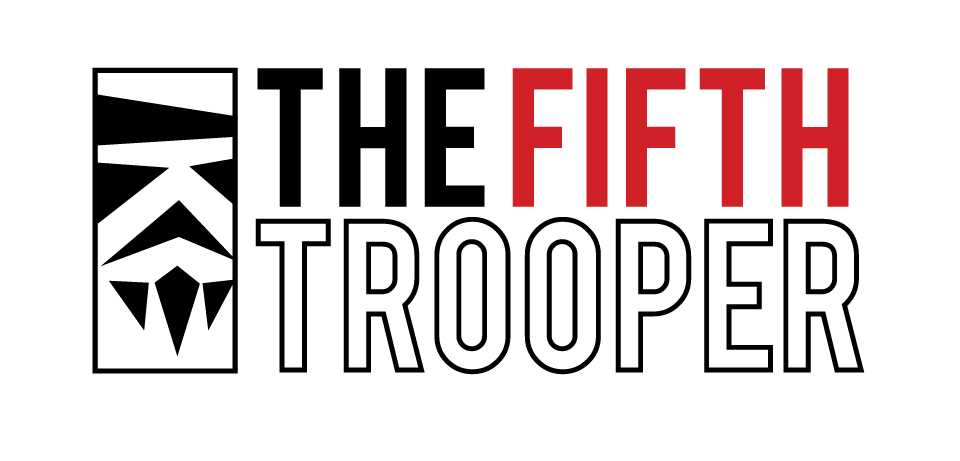
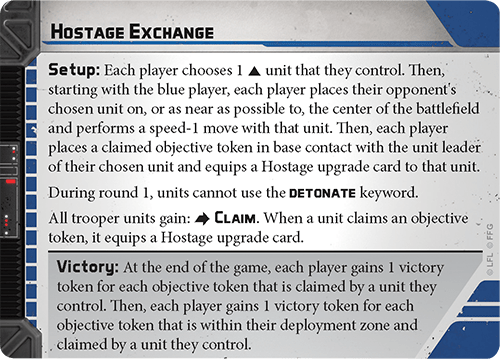
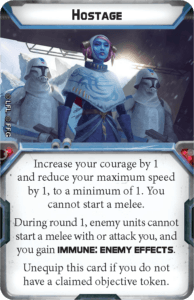
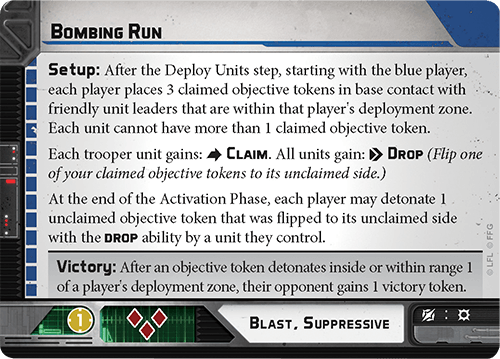
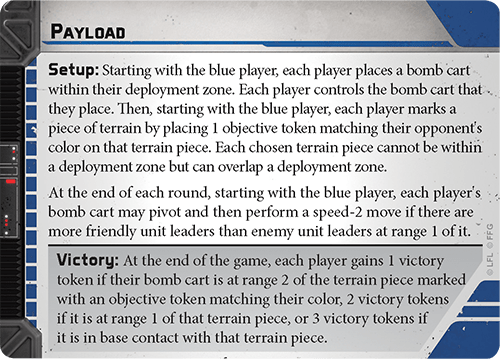
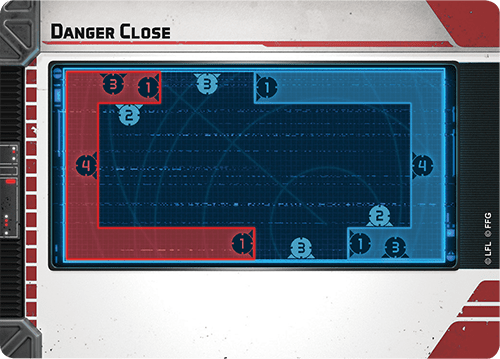
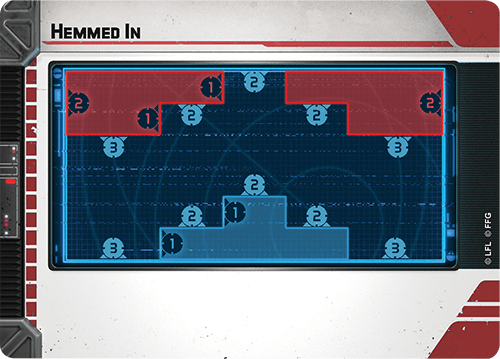
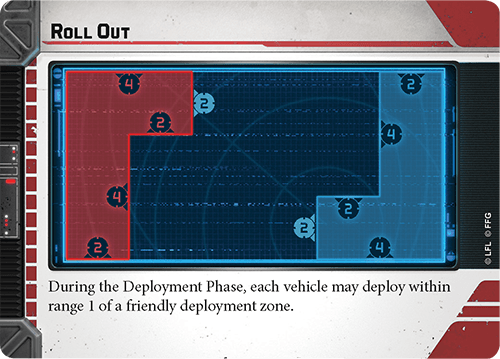
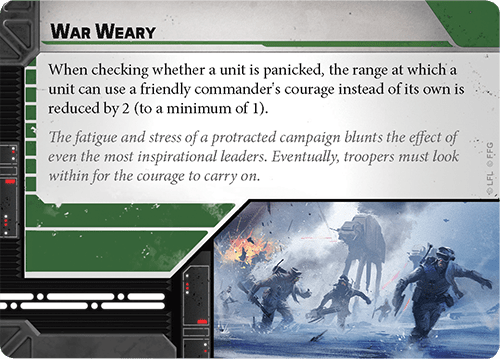
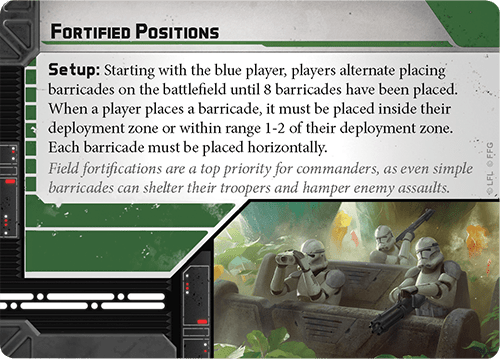
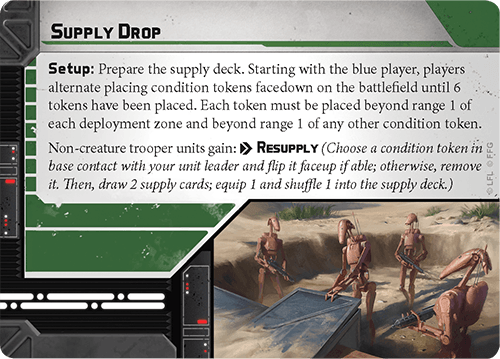
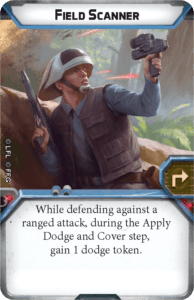
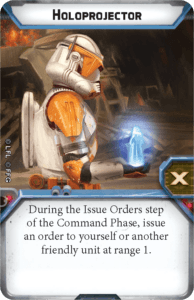
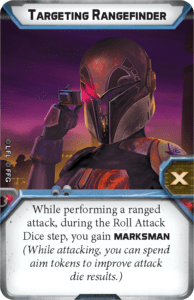
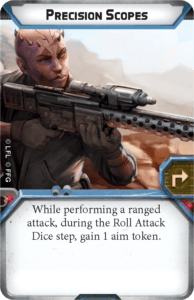
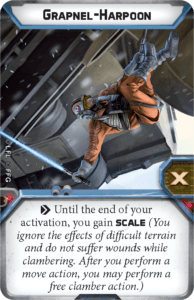
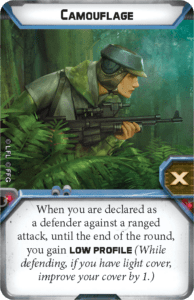
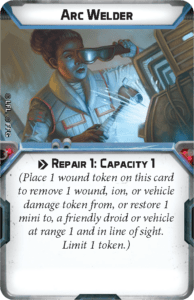
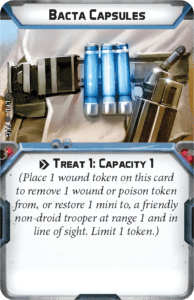
Well, let’s see…
Of all those 9 cards, 5 are good for Mobile Threat list archetype – a bit more than 55%. Which army is good with Mobile Threat? Rebels!
REBEL BIAS!!11!1!eleven!
On a more serious note, I guess CIS lists are closer to Force Flex archetype… which means War Weary is really bad, while Payload, Supply Drop and Hostage are good. I’ll keep that in mind!